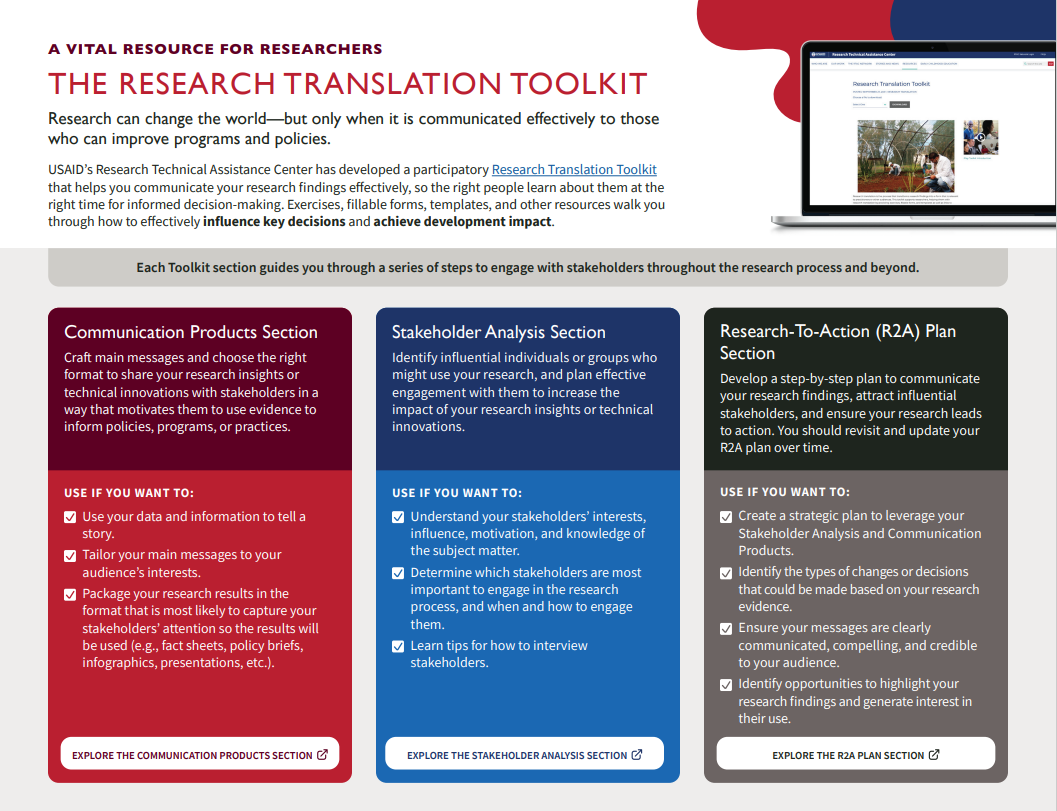Research translation is the process that transforms scientific research findings into a form that is relevant to practitioners or other audiences. In 2021, PRB developed the Research Translation Toolkit to support those who generate and use research findings, helping them with translation by providing exercises, fillable forms, and templates as well as links to examples and key resources. The toolkit is comprised of three sections: the Communications Products section, Stakeholder Analysis section, and the Research-to-Action Plan section. Each toolkit section guides researchers through a series of steps to prepare specific outputs, such as a communication product, stakeholder analysis, or research-to-action plan.
The Communication Products section focuses on how to write an effective fact sheet or policy brief. The Stakeholder Analysis section focuses on identifying, prioritizing, and tracking engagement with stakeholders that can be influential in using research to impact programs, policy, and practice in a sector. Finally, the Research-to-Action (R2A) Plan section guides users through the development of a plan designed to accomplish research translation goals and objectives. Each section may be used independently. Each section’s package of tools includes a guide, accompanying worksheets and examples, a “Readme” file with detailed instructions, and a troubleshooting guide. We recommend downloading all files within a section into the same folder on your computer, in order to enable cross-linking between the files.
PRB also prepared additional resources to support use of the Research Translation Toolkit (See below), including:
- Research Translation Toolkit Overview Factsheet: this factsheet provides a quick snapshot of the toolkit, including the purpose and value of each section and when to use it in the research process.
- Two testimonial videos from research teams in India and Kenya.
- The R2A Guide and Template: this simplified version of the toolkit helps users develop a step-by-step plan to communicate your scientific research findings, engage influential stakeholders, and ensure your research leads to action, but does not include the detailed information, worksheets, and examples that you find in the toolkit.


